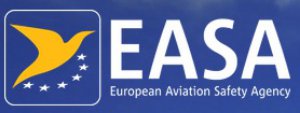
Plans to update EU civil aviation safety rules to address emerging risks were amended and approved by Transport and Tourism Committee MEPs on Thursday. The updated EU regulation will also introduce the EU-level requirements for drones, to ensure safety and privacy.
“EU aviation safety standards are already high. Even so, the growing use of drones and threats from terrorism and cyber-attacks require new rules to ensure aviation safety and security. At the same time, these rules should be performance and risk based – ultralight or business aviation should not have to meet the same requirements”, said rapporteur Marian-Jean Marinescu (EPP, RO).
“Unmanned aircraft have great potential for the future. Many applications are already providing various services, with better quality and results. At the same time, without proper discipline, these could give rise to serious safety and security problems. Registration and identification are basic requirements. Unmanned aircraft with a take-off mass higher than 250 grammes and all certified ones should be registered”, he added.
Identify Risks Early
The committee text includes provisions for safety management systems at EU and member state levels to identify potential safety risks earlier. A European Aviation Safety Programme should be drawn up and each EU member state should also establish its own national aviation safety programme and a plan setting out key safety risks for its civil aviation safety system and actions to mitigate them.
“Socio-economic factors” (e.g. employment conditions) should be taken into account, when identifying risks to aviation safety and mitigating measures, MEPs, add.
Drones To Be Registered
The proposed update would also bring all unmanned aircraft, or drones, within the EU civil aviation framework for the first time, setting out design and operation requirements to ensure privacy and safety. Drones lighter than 150kg fall currently under national competence.
The EU Commission would be tasked with defining detailed safety rules for drone design and drone flights, such as conditions in which additional equipment is required to limit altitude or access to critical zones (e.g. power plants or airports). The Commission should also set out conditions and procedures for mandatory registration, marking and identification of unmanned aircraft, say MEPs. All certified drones, plus those that are not certified and have a maximum take-off weight above 250 grammes, should be registered”, they add.
Flights Over Conflict Zones & Unlawful Act Risks
The draft rules would also empower the European Aviation Safety Agency (EASA) to issue directives and recommendations to address risks that might arise from unlawful acts or from flight paths that cross regions that are the scene of armed conflict. The EASA could take measures to remedy vulnerabilities in aircraft design too.
Emissions & Noise
Aircraft and parts must be designed to minimise noise and emissions, in compliance with EU law and international standards, adds the text.
Next Steps
The committee text constitutes Parliament’s position for negotiations with the Council on the final wording of the regulation. The committee also approved a mandate to start these negotiations.
Note to Editors
The regulation under revision sets out common safety requirements for aircraft and their engines and other parts as well as air operations, aircrew and operators. With the aviation traffic in Europe predicted to increase by 50% in the next decades, the aim of the changes isto ensure that Europe’s good aviation safety record is maintained..
Under the proposed changes, safety-related aerodrome equipment and ground handling services and apron management services (loanding, unloading refuelling) would also have to comply with EU safety requirements.
Drones
Currently drones lighter than 150 kg fall under national competence. The draft regulation sets out essential safety requirements for unmanned aircraft design, production, maintenance and operation, parts and control equipment as well as personnel and organisations involved. The aim of common rules is to give greater clarity for both drone manufacturers and drone operators and boost to the development of the sector and provide a uniform level of safety across the EU.
The Commission would be tasked with defining the specific conditions for various limitations (e.g. altitude, operation in particular geographical zones, such as chemical and nuclear power plants, industrial sites and aerodromes etc.) and requirements for additional equipment (e.g. position communication, critical zones restriction, collision avoidance).
Civil drone technology could account for an estimated 10% of the EU aviation market within the next 10 years, according to (i.e. about €15 billion per year). According to the European Commission, the drone industry could create some 150,000 jobs in the EU by 2050.
Source: Press Release
